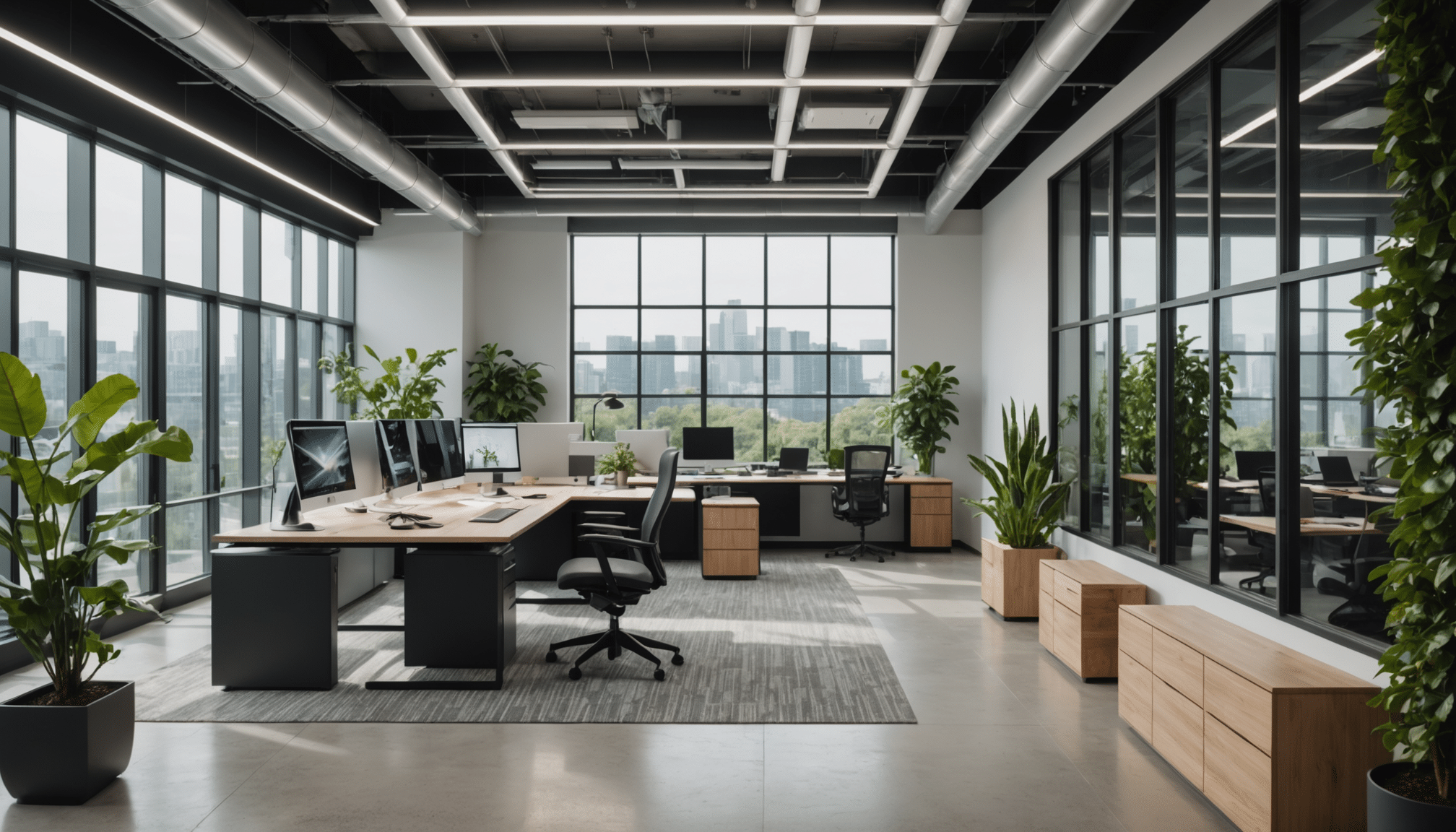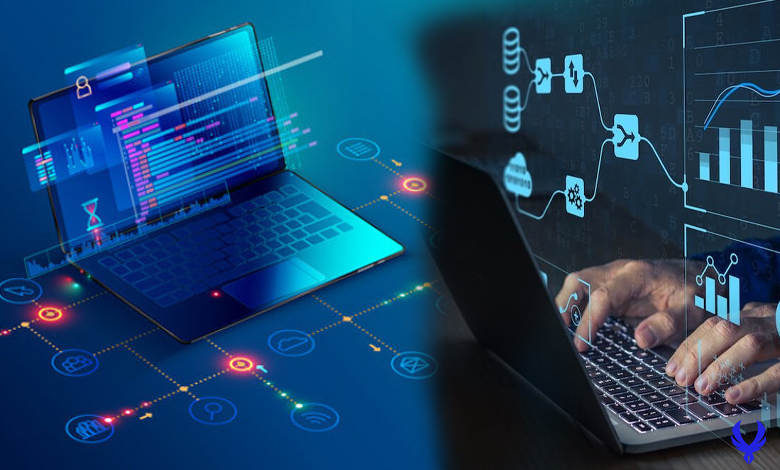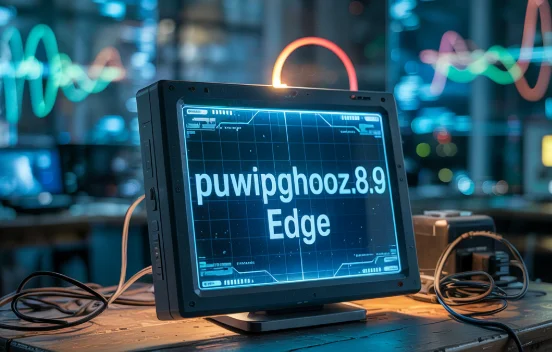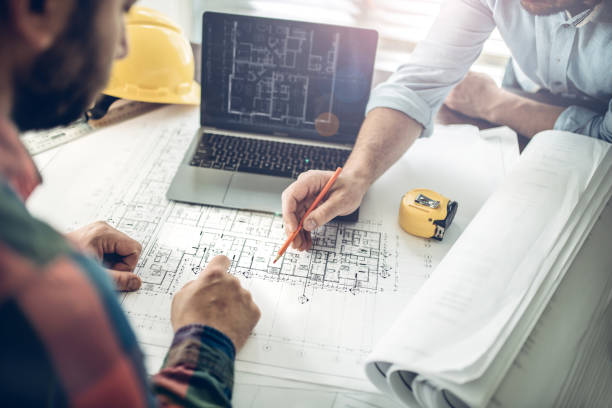The modern workplace is evolving faster than ever. In 2025, commercial spaces need to be more than just functional—they must be intelligent, connected, and efficient. With advancements in automation, artificial intelligence, and the Internet of Things (IoT), smart offices are transforming the way businesses operate.
Companies that invest in smart office technology will benefit from increased productivity, cost savings, and an improved employee experience. From energy-efficient automation to AI-driven collaboration tools, here’s how businesses can integrate technology into their commercial spaces to stay ahead.
1. Automating Access and Security Systems
Security is a top priority for any business. Traditional lock-and-key systems and even outdated access cards are becoming obsolete. In 2025, modern offices are leveraging automation to enhance security while maintaining convenience.
Biometric and Facial Recognition Access
Keyless entry is becoming the norm. Offices are now integrating biometric access control, such as fingerprint scanners and facial recognition systems. These technologies enhance security by ensuring that only authorized personnel can enter restricted areas. They also eliminate the need for physical keycards, which can be lost or duplicated.
AI-Powered Surveillance and Threat Detection
Security cameras have evolved. Today’s surveillance systems use AI to detect unusual behavior, unauthorized access, and potential security threats in real-time. AI-powered software can alert security personnel automatically, reducing the risk of breaches.
Touchless Entry Points
For hygiene and convenience, businesses are adopting touchless entry solutions. Smart doors that open automatically based on motion detection or smartphone authentication reduce physical contact, making offices safer and more accessible.
2. Using IoT for Smart Building Management
The Internet of Things (IoT) is transforming how businesses manage office spaces. IoT devices communicate with each other to optimize energy use, track occupancy, and enhance workplace efficiency.
Smart Lighting Systems
Traditional lighting systems waste energy. Smart lighting, on the other hand, uses sensors to adjust brightness based on occupancy and natural light availability. Offices can program lights to dim or turn off automatically in unoccupied areas, significantly reducing electricity costs.
Climate Control with AI
Maintaining a comfortable office environment is crucial for productivity. AI-powered HVAC systems learn employee preferences and automatically adjust heating and cooling settings. These systems reduce energy waste by optimizing temperature based on room occupancy and weather conditions.
Occupancy and Space Utilization Sensors
Businesses are increasingly using IoT sensors to monitor workspace utilization. These sensors provide real-time data on office occupancy, helping companies make informed decisions about space allocation. This technology is particularly useful for hybrid work models where employees alternate between remote and in-office work.
3. Enhancing Productivity with AI and Automation
Technology isn’t just about efficiency—it also enhances productivity. AI-driven tools are reshaping the way teams collaborate, communicate, and complete tasks.
AI-Powered Virtual Assistants
Virtual assistants like AI chatbots and voice-activated systems help employees manage schedules, set reminders, and automate repetitive tasks. These tools reduce administrative workload, allowing employees to focus on more important responsibilities.
Smart Meeting Rooms
Meetings are more efficient with AI-powered conference rooms. Features like voice recognition, automated transcription, and real-time language translation improve communication and collaboration. Smart projectors and screens can automatically connect to employees’ devices, streamlining presentations and video conferencing.
Workflow Automation Tools
Repetitive tasks like data entry, invoice processing, and scheduling can now be automated with AI. Businesses using workflow automation software experience fewer errors and increased efficiency, freeing up employees to work on higher-value tasks.
4. Upgrading Office Design with Smart Fixtures
Office design plays a crucial role in employee comfort and efficiency. Smart fixtures enhance both aesthetics and functionality, making workplaces more enjoyable and productive.
Adaptive Workstations
Smart desks are revolutionizing office ergonomics. Adjustable desks that automatically shift between sitting and standing positions encourage healthier work habits. Some models even integrate AI to remind employees to adjust their posture throughout the day.
Soundproof Smart Pods
Noise pollution can be a major distraction in open offices. Soundproof pods equipped with noise-canceling technology provide employees with private spaces for focused work or confidential meetings. These pods use smart lighting and ventilation systems to maintain comfort.
Restroom Upgrades with Smart Features
Modern office restrooms are incorporating smart technology to improve hygiene and efficiency. Touchless faucets, automated soap dispensers, and self-cleaning toilets are now standard in high-end commercial spaces.
Businesses looking for durable and stylish restroom upgrades are also opting for stainless steel bathroom partitions. These partitions are resistant to moisture, easy to clean, and provide a sleek, modern appearance. By choosing stainless steel, companies ensure longevity while maintaining a professional and hygienic environment.
5. Supporting Hybrid and Remote Work with Smart Solutions
The traditional office model has changed. With more employees working remotely or in hybrid setups, businesses need technology that bridges the gap between in-office and remote teams.
Cloud-Based Collaboration Tools
Cloud computing allows employees to access files, documents, and software from anywhere. Tools like Google Workspace, Microsoft 365, and Slack ensure seamless collaboration between remote and in-office employees.
Virtual Reality (VR) Meeting Spaces
VR technology is becoming a game-changer for remote teams. Virtual meeting spaces replicate real-world office environments, allowing employees to interact as if they were in the same room. Companies are already using VR to conduct training sessions, brainstorming meetings, and project reviews.
Smart Desk Reservation Systems
With hybrid work schedules, employees don’t always need assigned desks. Smart desk reservation systems allow workers to book workstations in advance, ensuring optimal space utilization. These systems integrate with occupancy sensors to show available desks in real-time.
6. Reducing Costs with Smart Energy Solutions
Technology is helping businesses cut costs while reducing their environmental impact. Energy-efficient solutions ensure commercial spaces remain sustainable and cost-effective.
Automated Energy Management Systems
AI-driven energy management systems monitor power usage and automatically adjust settings to minimize waste. These systems can control lighting, heating, and cooling based on real-time data, significantly lowering energy bills.
Smart Solar Panels
Many companies are turning to solar energy. Smart solar panels use AI to optimize energy production based on weather conditions. Businesses can store excess energy for later use, further reducing reliance on traditional power grids.
Smart Water Conservation Systems
Commercial buildings consume large amounts of water. Smart sensors detect leaks, regulate water usage, and ensure efficient distribution. These systems help businesses lower their water bills while supporting sustainability initiatives.
7. Future-Proofing Commercial Spaces with Smart Tech
Technology is constantly evolving. Businesses that future-proof their commercial spaces will stay competitive and adaptable to new advancements.
Modular and Scalable Technology
Investing in modular technology ensures that offices can upgrade their systems without major renovations. Scalable solutions like wireless charging stations, adaptable IoT devices, and cloud-based software keep businesses flexible.
AI-Driven Workplace Analytics
AI analytics platforms provide insights into workplace efficiency. Businesses can track employee engagement, space utilization, and energy consumption to make data-driven decisions that optimize performance.
Compliance with Smart Building Standards
Regulations around energy efficiency and data security are becoming stricter. Smart offices should comply with standards such as WELL Building Certification and LEED to ensure they meet modern workplace requirements.
Conclusion
Smart office technology is shaping the future of commercial spaces. Businesses that embrace automation, AI, and IoT will benefit from increased efficiency, security, and employee satisfaction. From energy-saving solutions to AI-powered collaboration tools, integrating smart technology ensures that offices are not just modern but also adaptable to future changes.
In 2025, a smart office isn’t just an option—it’s a necessity. Companies that invest in intelligent workplace solutions will be better positioned for success in an increasingly digital world. Now is the time to upgrade and future-proof your commercial space.





